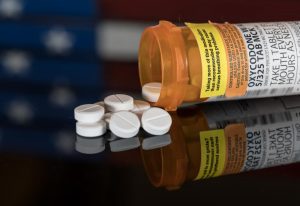Xanax rehab is a treatment program for individuals who have become addicted to or dependent on the benzodiazepine medication Xanax. It typically involves a combination of detoxification, therapy, and support to help individuals overcome their physical and psychological dependence on the drug and achieve lasting recovery. Xanax rehab can provide a structured, supportive environment to help you overcome your addiction and achieve lasting recovery.
Xanax is a highly addictive prescription medication commonly used to treat panic disorders and anxiety by depressing the central nervous system. However, for many people, the use of Xanax can quickly spiral out of control and lead to physical dependence and addiction. If you or a loved one is struggling with Xanax addiction, it’s essential to know that help is available and that recovery is possible. In this article, we’ll explore the success rates for Xanax rehab and why seeking professional treatment can be the key to overcoming your addiction.
Success rates for Xanax rehab can vary depending on several factors, including the severity of the addiction, the individual’s underlying mental health conditions, and the type of treatment received. However, research has shown that Xanax rehab programs that include a combination of medical detoxification, therapy, and support can be highly effective in helping individuals achieve lasting recovery from addiction.
Factors Affecting Xanax Rehab Success Rates

One study by the National Institute on Drug Abuse (NIDA) found that individuals who received comprehensive, evidence-based treatment for addiction had a higher rate of successful recovery than those who did not receive such treatment. This highlights the importance of seeking high-quality, evidence-based treatment programs for Xanax addiction.
In addition to comprehensive treatment, several other factors can increase the success rates for Xanax rehab. These include:
Length of Treatment: Studies have shown that individuals who receive longer-term treatment for addiction have higher success rates than those who receive shorter-term treatment. In general, individuals who receive treatment for 90 days or more tend to have the best outcomes.
Aftercare Planning: Aftercare planning is a vital component of successful Xanax rehab. This involves creating a plan for continued support and resources after the individual leaves the treatment center. This can include ongoing therapy, peer support groups, and participation in recovery programs.
Peer Support: Peer support can play a key role in successful Xanax rehab. This includes support from peers who are also in recovery, as well as family members and loved ones. Studies have shown that individuals with strong support networks are more likely to maintain sobriety and achieve lasting recovery.
Medication-Assisted Treatment: Medication-assisted treatment (MAT) is a type of treatment that involves using medications in combination with behavioral therapies to treat addiction. For individuals struggling with Xanax addiction, MAT may include using drugs such as buprenorphine or naltrexone to help manage withdrawal symptoms and reduce cravings. Research has shown that MAT can effectively reduce relapse rates and improve long-term outcomes for individuals in recovery.
Personal Motivation: Finally, personal motivation can play a crucial role in the success of Xanax rehab. Individuals who are highly motivated to overcome their addiction and achieve lasting recovery tend to have better outcomes than those who are not motivated. This highlights the importance of working with a therapist or counselor to develop a strong sense of motivation and commitment to recovery.
How do you know if a rehab treatment facility is effective?

In order to increase one’s chances for recovery success, it is best to find the right Xanax rehab treatment program suited to your recovery needs. Suppose you want to get the right rehab program. In that case, you need to work with a healthcare provider, therapist, or physician to select a facility addressing all your needs, which includes co-occurring disorders and addiction. This means narrowing down your options based on certifications, accreditations, amenities, additional services, and location.
An effective rehab facility should have the following services to increase recovering users’ chances for successful, long-term recovery.
Detoxification: One of the first steps in Xanax rehab is a medically-supervised detoxification process. This is designed to help you safely and comfortably withdraw from the drug and overcome the physical dependence that has developed. During detox, you’ll be monitored by medical professionals and given support to manage withdrawal symptoms like anxiety, insomnia, and agitation.
Therapy: The core of Xanax rehab is typically a therapeutic component. This includes a range of evidence-based treatments, such as cognitive-behavioral therapy, individual counseling, and group therapy. These therapies are designed to help you understand the root causes of your addiction and develop new coping skills to manage stress and anxiety.
Support: Xanax rehab provides a supportive environment where you can work on your recovery with the help of trained professionals and peers who are going through similar experiences. This can include group therapy sessions, peer support groups, and aftercare planning to help you stay on track once you leave the rehab center.
Long-term Recovery: Xanax rehab is designed to help you achieve long-term recovery from addiction. This means you’ll receive ongoing support and resources to help you stay clean and maintain your progress even after leaving the program. This may include aftercare planning, follow-up therapy, and participation in peer support groups.
Improved Physical and Mental Health: Finally, Xanax rehab can have a profound impact on your overall physical and mental health. By overcoming your addiction, you’ll likely experience improvements in your sleep, mood, and energy levels. You may also find that other physical health problems that have been exacerbated by your drug use improve or resolve.
Treatment Success
The successful treatment of a Xanax addiction requires continuous assessments, customization, and adjustments when necessary. All of this should be delivered by medical professionals through medications and evidence-based therapies. When it comes to treatment, there’s no one-size-fits-all approach, but success is dependent on whether the individual completes the treatment and proceeds with aftercare programs.
In conclusion, the success rates for Xanax rehab can vary depending on many factors. However, research has shown that comprehensive, evidence-based treatment programs that include medical detoxification, therapy, and support can be highly effective in helping individuals achieve lasting recovery from addiction. If you or a loved one is struggling with Xanax addiction, it’s ideal to seek help as soon as possible. With the proper treatment and support, you can learn to manage your anxiety, develop new coping skills, and regain control over your life.



